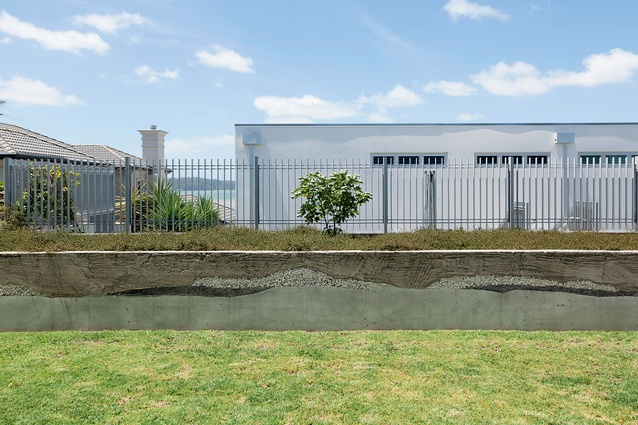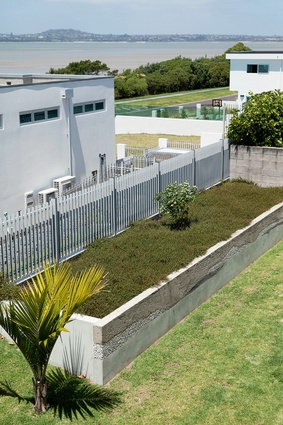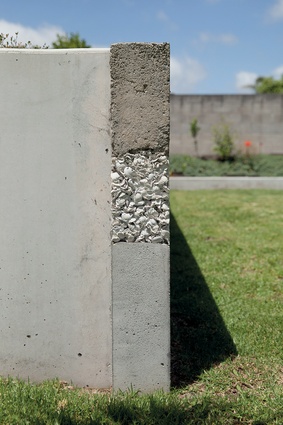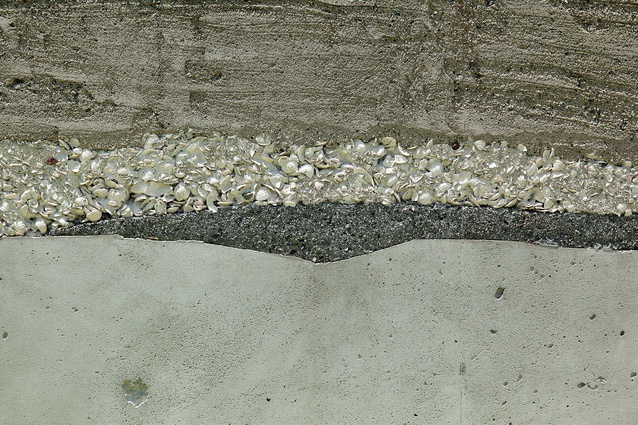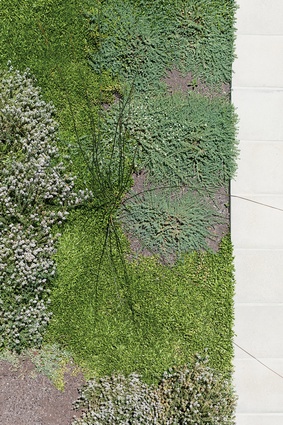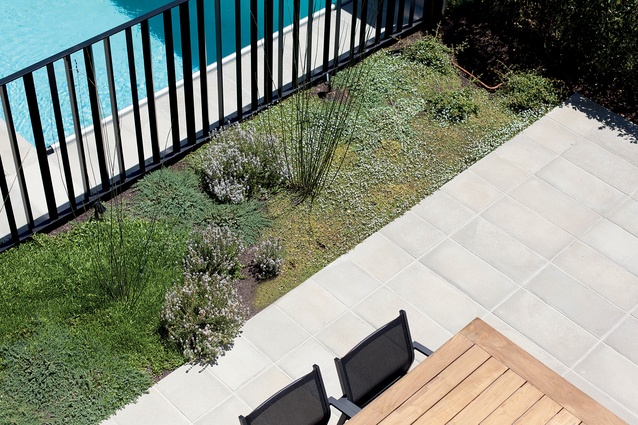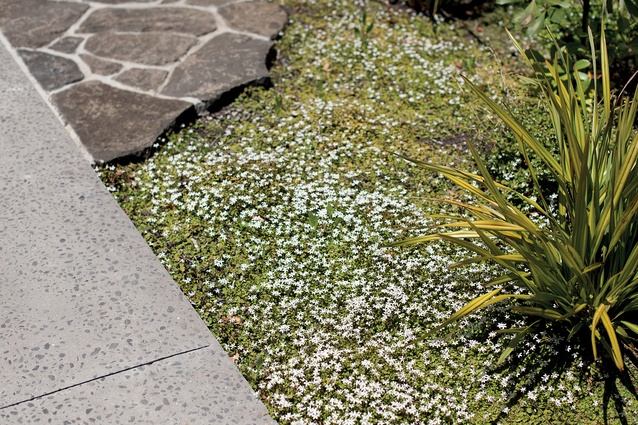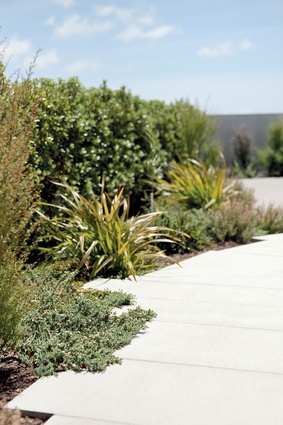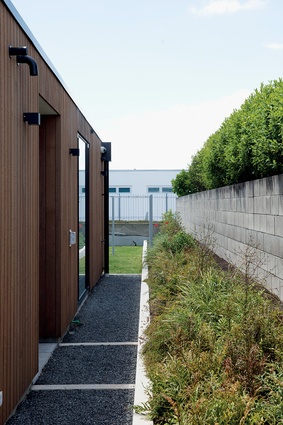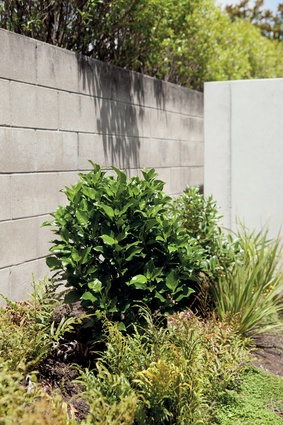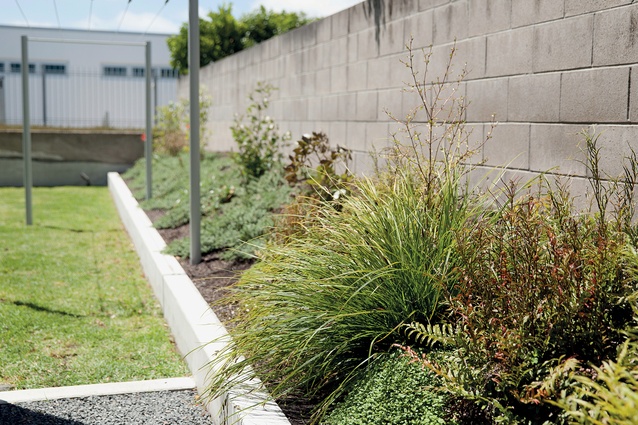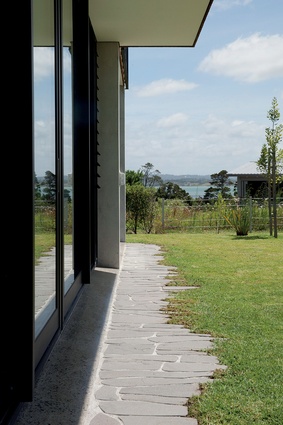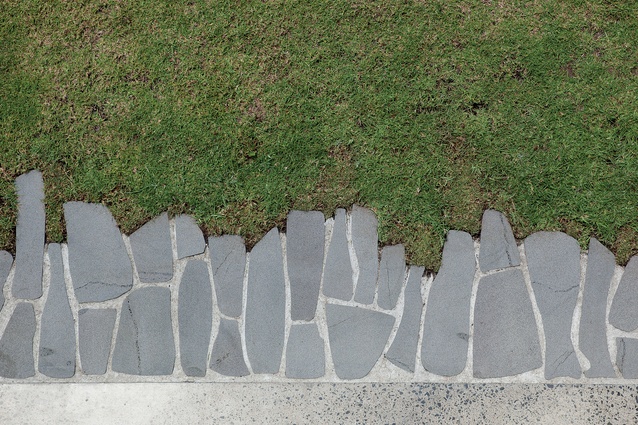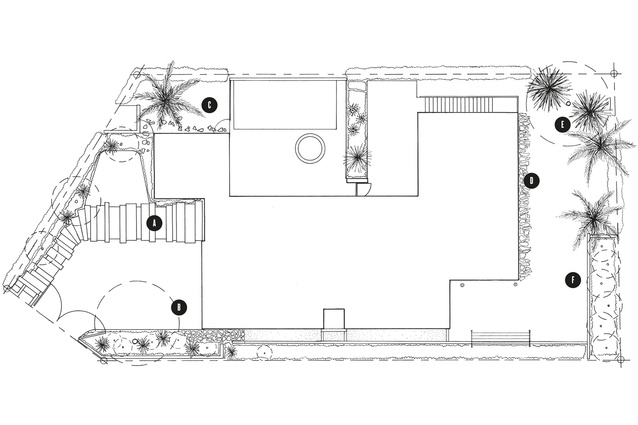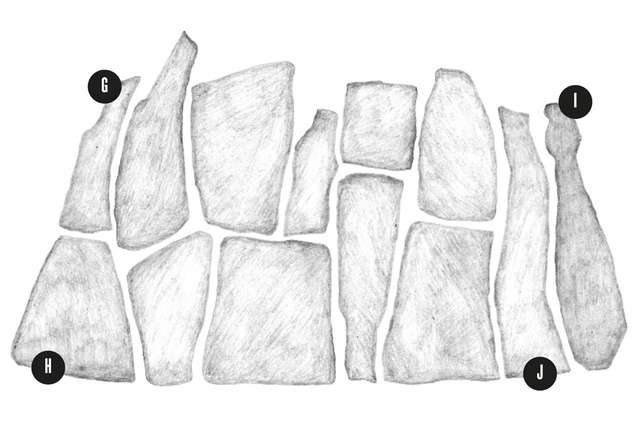Te Atatu garden
Where do you look for inspiration when seeking to instill meaning and significance upon constructed landscapes, especially if you wish to avoid the usual collection of tired tropes? Philip Smith, from O2 Landscapes, the designer of this carefully composed Te Atatu garden, sought inspiration in all manner of places, books and museums, Manaaki Whenua/ Landcare Research, his clients and a knowledgeable friend.
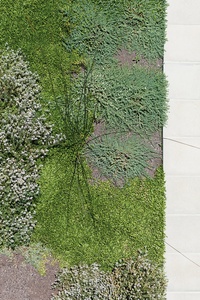
The garden, which surrounds an impressive, rectilinear Stevens Lawson Architects-designed house, is furnished mostly with native plants, albeit with some exotic interlopers, and two built works that are imbued with a strong narrative aspect – an adze path and midden wall.
The plants that surround and inhabit these special moments have been chosen for appropriateness to site, or because they are interesting plants with interesting stories, or plants relevant to Smith’s clients, in that they are sourced from places special to them, or plants that are rare and/or endangered and deserving of wider use in cultivated habitats.
With respect to that last line, you might imagine Smith as a guerilla gardener, slipping critically endangered plants into the back yards of unsuspecting clients.
In truth, as a champion of rare, underdog plants, Smith is a more than able evangelist who is happy to share the stories of specimens with wonderfully unwieldy monikers: Mazus novaezeelandiae subsp. impolitus f. hirtus, for instance, the critically endangered native groundcover with small white flowers; or Lobelia (syn. Pratia) ‘Woodhill’, a critically endangered West Auckland plant that is only known in the wild at Woodhill Forest and a bay near Karekare. Surrounding this house’s driveway you’ll find other interesting groundcovers, such as Pimelea urvilleana ssp. nesica, a Hauraki Gulf form of the blue-leaved native groundcover, and Hydrocotyle elongata, a groundcover from the Kauaeranga Valley, where a number of other plants were sourced because of the area’s significance to one of the clients. In this area there is also Myrsine divaricata from Pakiri; its small leaves and shadowy form will in time lend depth to the entranceway. To quickly cover off some other planting highlights, the southern side of the house has a tactile gravel path brightened by a long bank of Blechnum minus and, amongst the many other things native on this strip, scarlet nerines are a pleasantly surprising interloper. At the back of the house there are two varieties of Phormium tenax, prized weaving varieties, and three specimens of an impressive form of East Cape nikau, the last three plants of this form to be available for a while, mentions Smith.
There are many other plants in this garden with significant stories but there are also those cleverly crafted objects. Smith’s midden wall is the front face of a large concrete planter now sporting a dense head of wiry Muehlenbeckia complexa. Standing proudly at the heart of this bed is a singular specimen of aute, Broussonetia papyrifera.
The wall, explains Smith, is an abstracted form of archaeological midden profiles. Composed of four different layers of concrete-based media, it is a wall of contrasting textures. There is a base of pure concrete, scratched with wire brushes to bring a sheen to the surface; there are inserts of concrete with charcoal added, a reference to fires of ancient moa hunters; there’s a layer of seashells – typical midden refuse, mixed with white cement for solidity; and a top layer of concrete mixed with builder’s mix and potting mix, which gives the concrete an aged appearance. In its construction, the bottom layer is anchored with reinforced steel; protruding form this steel-reinforced section, but not connected to the steel, are numerous fiberglass rods, which unlike steel won’t rust and adversely affect the wall’s integrity.
Of all the wonderful plants in this garden, the aute – in the middle of the mass Muehlenbeckia – has special significance. Aute, or paper mulberry, is the plant from which tapa cloth is derived; it’s taonga for Maori, and has its own story of Pacifc migration.
“Aute is a tropical type of plant, although it wasn’t originally tropical, it came from Southeast Asia,” says Smith. “As it moved throughout the Pacific, the clone that survived became dependent on the warm conditions, even though originally it was from a colder climate. In New Zealand, Maori found aute difficult to cultivate after a century and as aute became rare, tapa cloth became correspondingly more treasured. Chiefs would have a strip of tapa cloth hanging from their topknot, simply because of its rarity, because it just didn’t survive. Even kumara wasn’t a taonga in the same sense as this.”
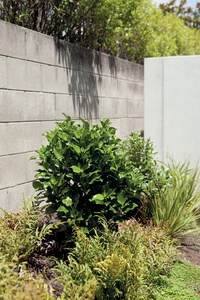
Given that aute is extinct in New Zealand, sourcing a specimen wasn’t straightforward. Smith knew Manaaki Whenua / Landcare Research had an ethnographic plant collection. He got in touch and asked if there was any way to procure the plant. He was in luck; one of the institute’s people had recently travelled to China to source aute that was close to the original Pacific variety.
“This form of aute was collected from southern China by Warwick Harris to provide material that was closer to the original source that Pacific peoples would have taken through the tropics,” explains Smith. “It was gifted to us by the coordinator of the Culturally Significant Plant Collection at Manaaki Whenua, as distributing material to parties for whom there is cultural value attached to aute was the primary reason for cultivation. It is incarcerated within a concrete box, as it is an extremely vigorous, suckering plant.”
Aute also can be linked to the adze path, which is comprised of a number of carefully researched adze or toki types, and patu aute, or tapa-cloth beaters.
This path, which is perhaps less of a path and more of an intriguing edge to the eastern side of the house, had its genesis in a comment made by architect Nicholas Stevens, who expressed interest in seeing a comparatively organic edge to the building, which might complement the very rectilinear form of the building.
“Rather than just doing any old stonework, we saw an opportunity to look into cultural form,” says Smith.
The adze path, hand-made from Timaru bluestone, features three patu aute forms – and, as Smith explains, these ancestral forms are very rare. There are only three or four patu aute in New Zealand museums.”
As well as patu aute, the path also features classic adze forms, “types one through five, and a few aberrant forms as well”, says Smith, who picked up a wealth of adze-related information from artist Michael Sheppard.
“There were different forms of adzes for making different objects, and some were ceremonial. Imagine making a waka: for deep-hulled, ocean-going waka, you needed narrower adzes, that can bite down into your timber. For a shallower, wider, river-going waka, a different adze will do.”
To construct the path, Smith made templates out of mdf, which were arranged in sections in his garage. Each stone was then numbered, photographed, and cut with a nine-inch angle grinder. The final step was to finish the edges.
Smith wanted them sharp, but for obvious reasons, not too sharp. As with most things in this story, the process of edge honing has its own narrative. Smith, researching another job at Kawakawa Bay, picked up a few stones, which he ended up keeping in his office. One, a kind of sandstone, was later found to be perfect for honing.
“Sandstone is quite sacrificial,” he says, “and it’s very similar to the stone that Maori used as grinding stones – hoanga. All of the edges were done with one stone and, at the end of the process, on the last few stones, we used it in such a way that it developed really cool grooves, and then we gave it to the client. They’ve now got it upstairs, hanging next to some amazing adzes and artifacts.”
As Smith illustrates here at Te Atatu, with his thoughtful and resourceful selections of plants, materials and artifact references, there are a number of ways to add a subtle cultural inflection to design. The great success here is that it appears almost effortless, and while there are plenty of stories available should the need arise, Smith says he is more interested in seeing something stand on its own as an object.
“It doesn’t need explanation, but it’s nice that there is an explanation, for those who are interested.”

